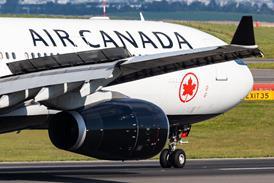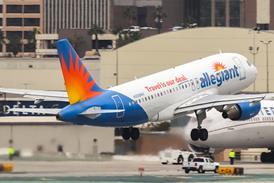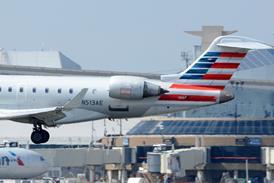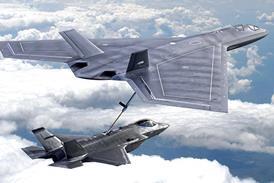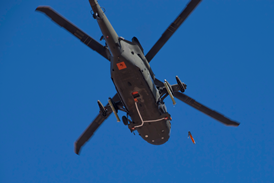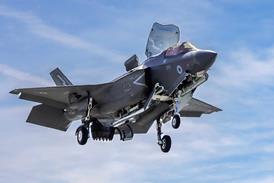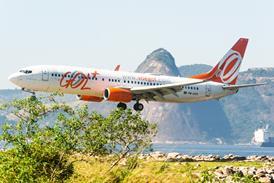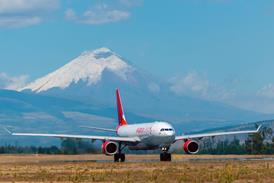Service continues to refine requirements for a future aerial refuelling platform, potentially stepping back from earlier emphasis on purpose-built stealth design in favour of more flexible approach
The US Air Force is going back to the aerospace industry to seek ideas for its next-generation tanker aircraft.
The service posted a non-binding solicitation known as request for information (RFI) on 15 August covering the Next Generation Air-Refueling System (NGAS). Details of the RFI were not immediately available, with the accompanying documents listed as “controlled” and not accessible by the public.
Interested firms have until 24 October to respond.
Unlike requests for proposals, which herald the formal start of a procurement effort, RFIs represent an attempt by the Pentagon to determine what ideas industry has for solving a given problem and how mature the potential solutions are.
Multiple RFIs related to the NGAS concept have been issued, including the solicitation that launched the programme in 2023. Separate requests have been more narrowly tailored around propulsion and mission systems for the future tanker.
The latest RFI appears to be specifically addressing the NGAS airframe.

Concepts for the next-generation tanker have fluctuated significantly since its inception in 2023.
The new aircraft was originally envisioned as a purpose-built low-observable design that could survive contested airspace to act as a stand-in tanker for stealth jets like the Lockheed Martin F-35 strike fighter and Northrop Grumman’s future B-21 bomber.
Around the time the original NGAS RFI was released, then-air force secretary Frank Kendall said the USAF was seeking to move its tanker fleet away from transport- or commercial-based designs and toward platforms custom built for a high-threat environment.
“Traditionally, we could take a commercial grade of aircraft and turn it into a tanker or transport,” Kendall noted. “They’re not designed with a high set of requirements for survivability or resilience, and the threats are taking that freedom away from us.”
A few months later, Kendall said he was accelerating the project try and field an NGAS aircraft by the mid-2030s.

However, two years later (with Kendall now out of office and seemingly little progress having been made on NGAS) the air force appears to have tempered its ambitions for the project.
Speaking at an Air and Space Forces Association (AFA) event in March of this year, the USAF general overseeing force design and integration suggested the service could perhaps achieve a survivable aerial refuelling capability with a systems-based approach rather than a bespoke stealth tanker.
This could involve using electronic warfare to better conceal a conventional refuelling aircraft, perhaps combined with advanced air-superiority capabilities like in-development uncrewed fighters or a future sixth-generation aircraft, said Major General Joseph Kunkel.
The head of Air Mobility Command, which oversees the USAF’s tanker and transport fleets, at the time said the air force was nearly complete with a formal analysis of alternatives for the NGAS tanker. That process is meant to assess the operational effectiveness, suitability and life-cycle cost of other means to achieve the capability goals of a proposed procurement effort.
Senior air force leaders are expected to provide more details on their current thinking about the NGAS project at the AFA’s annual Air, Space, Cyber conference in September.
Elsewhere, the USAF’s near-term plans for its tanker fleet have taken on more clarity.
In July, the service confirmed that it plans to increase its buy of Boeing KC-46 commercial derivative refuellers from an initial 179 to a total fleet of 263 jets.
That decision ends years of uncertainty about the USAF’s medium-term plans for modernising its tanker force, which is primarily composed of aged Boeing KC-135 Stratotankers.
At various points, the air force had mulled developing a third “bridge tanker” design that would act as a transitional aircraft between the KC-46 and NGAS.
While the cancellation of the bridge tanker programme was a setback for Lockheed Martin, which had offered an Airbus A330-based solution dubbed LMXT, the potential broadening of the NGAS scope could offer an opportunity to revive that concept.
Other potential candidates include start-up airframer JetZero, which has received $235 million in funding from the USAF to create a blended-wing body demonstrator known as the Z4. That jet is being developed with assistance from experienced military airframer Northrop Grumman and is set to fly as soon as 2027.
Brazilian airframer Embraer has also long-sought an entry into the US market for its KC-390 tanker/transport. The company has logged strong orders growth for the twinjet type around the world, but has yet to secure a deal with Washington.

